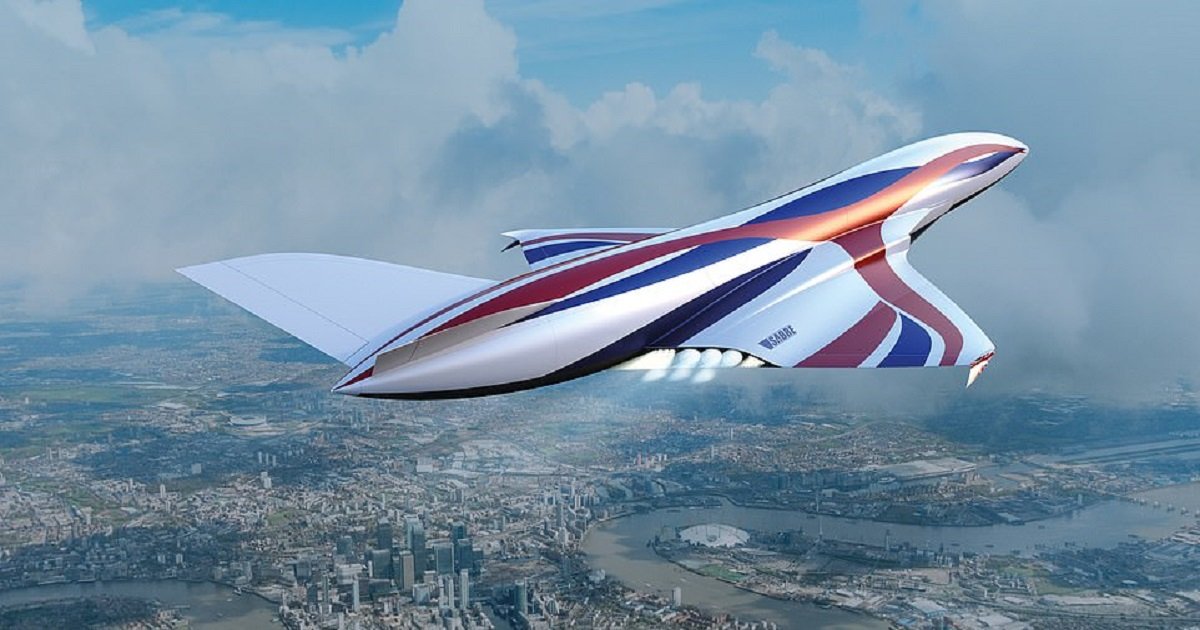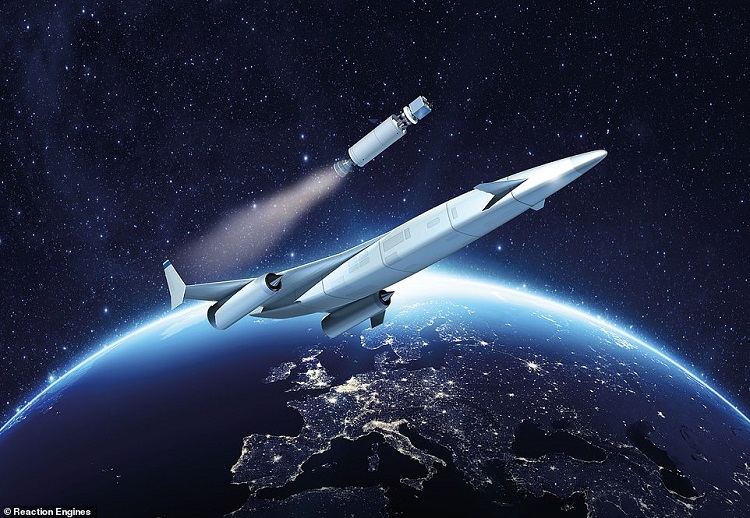Watch the video to find out more about SABRE.
Video credit: Daily Mail
Engineers at Reaction Engines reached a new milestone after they managed to make a “pre-cooler” that successfully functioned at a simulated speed of Mach 3.3 or 2,500 mph, preventing the engine from melting at the high temperatures generated at those speeds. This means that commercial passenger hypersonic flight has taken a step closer to reality.
The company’s experimental Synergetic Air-Breathing Rocket Engine (SABRE) is designed to be installed in large aircraft, allowing passengers to travel across continents in hours and deliver goods into space for less.
The “pre-cooler” will let the aircraft travel at extremely high speed without the engine melting from all the hot air rushing in. It was tested in conditions simulating three times the speed of sound.
The next step would be to test the technology at Mach 5.5 (4,200 mph), and if successful could eventually realize flights between London and New York at less than an hour.
Reaction constructed the testing facility in Colorado and used a General Electric J79 turbojet engine to recreate the conditions that will be experienced at hypersonic speeds.
The company hopes to create a reusable vehicle that would take advantage of the fuel efficiency of a jet engine and the power and speed of a rocket.
The Oxfordshire-based firm also wants to bring people and payloads into orbit and return to Earth.
A Reaction Engines spokesperson said that although it will be decades before the technology can be used in passenger jets, there are still more immediate applications where it can be used.
The heat exchanger technology, for example, has extensive commercial applications and the chance to revolutionize how thermal management is approached in a wide range of industries, including aerospace, motorsport, industrial processes, and the oil and gas industry.
The test was conducted at the newly opened TF2 test facility at Colorado Air and Space Port. The breakthrough comes 30 years after Reaction Engines was first formed in the UK around an engine cycle concept that sought to achieve space and hypersonic air-breathing flight from a standing start.
The pre-cooling method is supposed to cool the air coming into the engine from more than 1,000°C (1,832°F) to room temperature in one-twentieth of a second.
Engineers designed a heat-exchanger to manage extremely high-temperature airflows. The technology will ultimately lay the foundations for the company’s SABRE engine for low-cost repeatable access to space and it would work like an “air-breathing rocket engine.”
Because it would carry only a fraction of the fuel-oxidant that conventional rockets do, it will be much lighter.
From take-off to Mach 5.5, it would scoop oxygen from the atmosphere just as a jet would, which would then be fed into a rocket combustion chamber.
It would then be ignited with the stored liquid hydrogen, switching to full rocket mode at high altitude where it will burn liquid hydrogen and liquid hydrogen from its on-board fuel tanks.
Mark Thomas, the Reaction Engines chief executive, told the Times: “If you can pull it off, it’s a game changer. It kicks conventional rocket engines into touch.”
Recommended Video!
“Support Dog Senses His Owner’s Panic Attack While At The Airport And Immediately Comforts Her”




